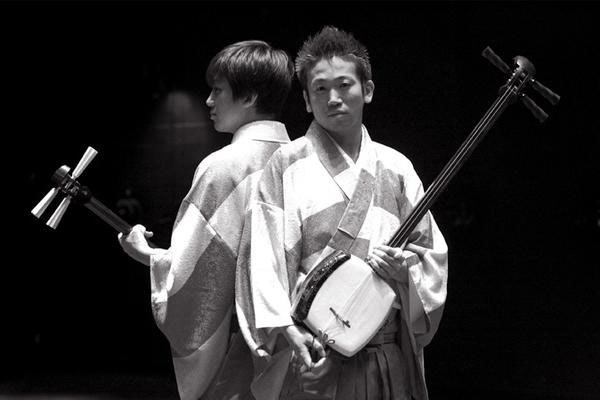
(You can’t say we don’t try to broaden your musical horizons here at NCS, but today’s guest post by Phro may push them farther than we ever have before.)
Well, there’s been a lot of talk recently about Celtic/bagpipe metal around these here parts. Which is pretty fucking awesome, if I may be so bold as to force my opinion on you like a political advertisement. Nothing wrong with a little sack in your metal, right? (Yeah, that’s the best I have right now…don’t expect anything too funny from this.)
Anyway, all this “traditional instruments doing dirty things with my metal behind closed doors and having babies that clearly are far more awesome than simply genetics should allow” got me thinking about a traditional instrument that I love: the shamisen. (Click here to get some Wikiknowledge dropped on your ass.)
Now, I know every FrownyFaceTrveCvltMetalHeadOfDoom out there thinks his or her favorite thing is the most metal thing of all, so that’s not what I’m going to say. However, if you don’t find yourself rocking (at least just a little) to some good tsugaru-jamisen, I’d say. . . well, I’d say this music probably isn’t for you and that’s tots cool. Seriously. Tots. Cool.
Before we really get started, I’d just like to explain very briefly what the fuck a shamisen is. A lot of people describe it as a Japanese guitar, which is just stupid. I think “Japanese lute” is the most commonly accepted description, but I prefer to think of it like a banjo. (They sound pretty similar to me.) Anyway, they have three strings, a long, thin neck, and a small box body.
Depending on the kind of shamisen, the form and size will be different.The Okinawan shamisen is smaller and the body is usually round and made of snake skin. The “standard” shamisen is about a 3 or 4 feet long with a body of about 10 inches which looks like a box. (It is a box, but the top and bottom are covered with animal skin.) The tsugaru-jamisen is basically a bigger version of the standard one.
Important note: there are no frets and the damn things go out of tune like a drunken sailor, so players are often re-tuning between songs. The largest string also has a natural reverb to it, so it’s the only acoustic instrument I know of that has built-in distortion. (I could just be stupid. Let us know how stupid in the comments below!)
Alright, so, today, for your totally-not-really-all-that-metal-but-kinda-metal entertainment, I’m going to be presenting some shamisen rocking. Pull on your hakama, throw some sen in your wallet, and let’s get this matsuri going. Continue reading »
